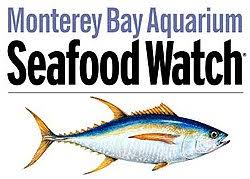
*** AMEREICAN EEL FARM HAS THE ONLY EEL WORLDWIDE THAT IS NOT RED LISTED BY THE MONTEREY BAY AQUARIUM SEAFOOD WATCH PROGRAM ***
PERFECT TRACEABILITY WELL DOCUMENTED
NC Fishermen Trip Tickets, NC Reporting Data,
Facility records on file for 3 years.
SUSTAINABLE, STABLE & WELL MANAGED
GOVERNMENT SANCTIONED by
NCMFC, ASMFC, SAFMC, NOAA, USFWS, NMFS
- ASMFC Fishery Management Plan (FMP) since April 2000
- Annual harvest data has been STABLE for 20 years
- Law Enforcement by Marine Patrol in each state as well as NOAA Nationally
- Restrictions: gear type, fish seasons, & Total Allowable Catch (TAC) annually
- Life Cycle Survey US F&WS 2008 & 2015 – “…threatened or endangered listing not warranted…”
U.S. FISH & WILDLIFE SERVICE (USFWS) 2015 LIFE CYCLE SURVEY
In 2011, the U.S. Fish and Wildlife Service (USFWS) initiated a status review of American eel under the Endangered Species Act (ESA) to assess the health of the population and the magnitude of threats facing the species. On October 7, 2015, USFWS announced that “the American eel is stable and does not need protection under the ESA.” Nonetheless, for the species’ long-term stability, the agency recommends continuing efforts to maintain healthy habitats, monitor harvest levels, and improve river passage for migrating eels.
In 2014, the International Union for the Conservation of Nature (IUCN) listed the American eel as “Endangered” on the Red List. The IUCN assesses flora and fauna globally to determine their conservation status. They utilize quantitative statistical data available to assess a fish Species or Family on a global basis.
By using the quantitative (numerical) data approach the science of the qualitative approach is ignored. It is half the picture. This metric fails to take into consideration the qualitative values highlighted in the professionally managed American eel (Anguilla rostrata) Fishery Management Plan (FMP).
Such qualitative characteristics as panmixia, unique life cycle, food web, prey, habitat, law enforcement and historical regional stability. No number can statistically be placed on such traits and characteristics. The best decisions are based on “best available science”. And “best available science” should include qualitative scientific data for the whole picture to be understood, assessed, and effectively managed not just numerical stats. Otherwise it would fall into a subjective decision rather than an objective assessment.
The American eel has shown stock stability since the Atlantic States Marine Fishery Commission (ASMFC) FMP in April of 2000. ASMFC has applied common sense in their assessment and management.
The IUCN and any other non-governmental organizations (NGO’s) do not have any legal implications.
Whereas, NCMFC, ASMFC, NOAA, USFWS, NMFS, SAFMC and member U. S. States
do have law enforcement bodies to protect and enforce FMP’s. This includes fines and jail time. Furthermore, all these agencies originated with an Act of the U.S. Congress.
It is the “supreme law of the land” for our U.S.A.
Recognizing the need for consistency across Atlantic coast fishery-dependent data collection efforts, the 23 agencies responsible for fisheries management on the Atlantic coast (ASMFC) established the Atlantic Coastal Cooperative Statistics Program (ACCSP). Using a committee-based approach, ACCSP works with its partners to increase data utility by the Cooperative Statistics Program (ACCSP). Using a committee-based approach, ACCSP works with its partners to increase data utility by:
- Developing and implementing coastwide data standards
- Providing electronic applications that improve partner data collection
- Integrating and sharing partner data via a coastwide repository
- Facilitating fisheries data access while protecting confidentiality
- Supporting further technological innovation
Using these standards and data supplied by our partners, the ACCSP produces timely, accurate marine fishery statistics for Atlantic coast fisheries and integrates them into a single data system designed to meet the needs of fishery managers, scientists, and fishermen.
In 2017, ACCSP transitioned from a standalone program, administered by the Commission, to a full program under the Commission umbrella. The move has increased ACCSP’s visibility among partners and stakeholders, encouraged greater participation by the states in the program’s data collection and management efforts, and enhanced coordination between fisheries data experts and the Commission staff. For more information on the program, please visit www.accsp.org
U.S. FISH & WILDLIFE SERVICE FINDING:
“Based on our review of the best available scientific and commercial information pertaining to the five factors, we find that the stressors are not of sufficient imminence, intensity, or magnitude to indicate that the American eel is in danger of extinction (an endangered species), or likely to become an endangered species within the foreseeable future (a threatened species), throughout all of its range.
There are no threats currently affecting the American eel throughout the species’ range. In addition, there are no portions of the species’ range that are considered significant given the species’ panmictic life-history. Therefore, we find that no portion of the American eel’s range warrants further consideration of possible endangered or threatened status under the Act, and we find that listing the American eel as a threatened or endangered species throughout all or a significant portion of its range is not warranted at this time.”




